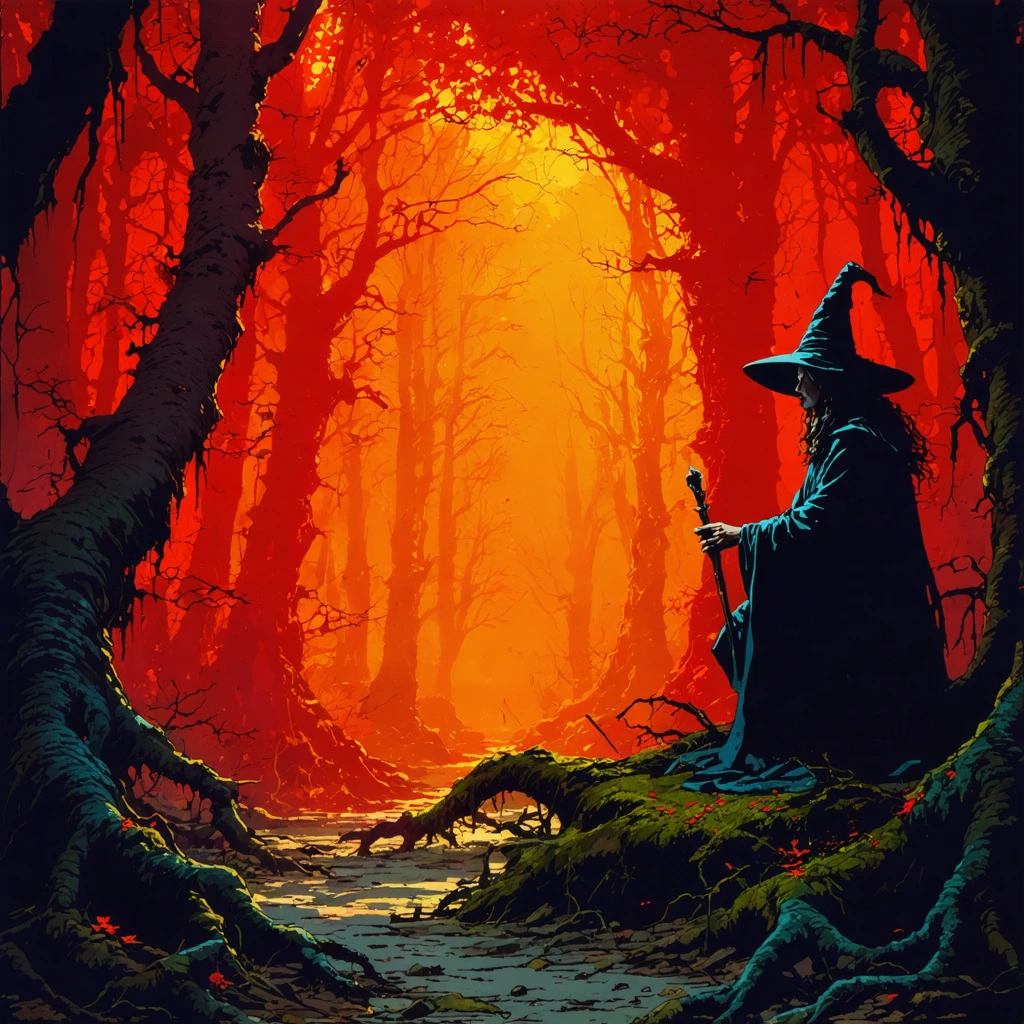
Introduction
Michael Streeter’s “Witchcraft: A Secret History” invites readers on an adventurous voyage through the hidden past of witchcraft. From its marketable title to its striking two-tone design, the book promises secrecy and illuminates history with vivid clarity. I began this review with careful consideration of clickbait trends because I believe authors often choose titles that capture attention. Consequently, I approached this title with both curiosity and skepticism, eager to find how Streeter balanced myth, lore, and historical reality.
The Allure of a “Secret” Narrative
Streeter harnesses the power of the word “secret” to evoke an air of mystery. He employs historical narratives and intriguing images in orange and black to remind us of the dual nature of witchcraft—both revered and feared. Moreover, he transitions the reader smoothly through time by infusing lively, contemporary language into discussions of medieval persecution and modern revival. In addition, the author favors clarity over embellishment. He organizes the book into three seminal sections that guide readers on a journey from ancient rites to the evolution of modern-day witchery.
Structuring the History: Chapters and Themes
The book divides its content methodically into three sections:
- The Ancient World: This segment covers early practices, the dawn of witchcraft, and the intertwining of magic with early religious beliefs.
- The Medieval World: Readers explore the rise of Christianity, periods of brutal persecution during the Burning Times, and the evolution of specific witchcraft practices in Europe and America.
- The Modern World: Streeter discusses the survival and rebirth of witchcraft, the birth of Wicca, and the modern tools and covens that still shape the craft today.
Additionally, he provides thoughtful commentary on figures such as Aleister Crowley, Gerald Gardner, and even mythic entities like the Witch of Endor. This structure enhances the reading experience and emphasizes the continuity of traditions once considered secret.
Visual and Structural Elements
Streeter employs a simple yet arresting visual motif using black and orange hues, which complement the energy of the content. The book also rewards readers with a tidy layout that integrates images, historical data, and concise narratives. The following table offers an overview of the book’s divisions and key chapters:
| Section | Key Chapters and Topics |
|---|---|
| The Ancient World | Origins of Witchcraft, Goddesses and the Dawn of Magic, Early Ritual Practices |
| The Medieval World | Rise of Christianity, The Burning Times, Evolution of Witchcraft Tools, Salem and the New World Horrors |
| The Modern World | Survival and Transformation of Witchcraft, Birth of Wicca, Modern Covens, Future Directions |
This strategic breakdown not only informs but also entices both novice and experienced enthusiasts. Furthermore, it emphasizes how tradition adapts with time.
Comparative Analysis and Recommendations
I found that Streeter’s narrative flows energetically. He employs transition words such as “moreover,” “consequently,” and “furthermore” that connect historical epochs seamlessly. The review becomes even more compelling when compared with other titles on witchcraft. For those seeking a deeper dive, I recommend exploring:
- A History of Magic, Witchcraft, and the Occult by DK
- A Storm of Witchcraft: The Salem Trials and the American Experience by Emerson W. Baker
- History of Witchcraft by Jeffery B. Russell and Brooks Alexander
- Magic: A History: From Alchemy to Witchcraft, from the Ice Age to the Present by Chris Gosden
- The Oxford Illustrated History of Witchcraft and Magic by Owen Davies
In addition, I noticed that Streeter purposely limits academic citations, which might unsettle purists hungry for rigorous sourcing. However, he channels his extensive journalism background to produce a narrative that remains engaging without overwhelming the reader with heavy documentation.
Critical Reflections and Final Thoughts
I rated “Witchcraft: A Secret History” three out of five stars because it strikes a balance between accessible storytelling and scholarly insight while sacrificing in-depth academia. The book delivers essential historical perspectives without revealing groundbreaking secrets. It crafts an enjoyable journey for beginners who will relish every new idea shared on the art and history of witchery. Though seasoned practitioners might not encounter surprises, they can appreciate the thoughtful prose and tidy structural design.
Michael Streeter’s work proves engaging and well-organized. The narrative choices steer clear of unnecessarily pompous or overwritten language. Instead, each sentence propels the reader into a world where legend intertwines with historical fact. With clear divisions, vibrant imagery, and thoughtful transitions, the book opens a window on centuries of human belief, evolving practices, and the eternal fascination with the hidden. Ultimately, the review invites both the curious and knowledgeable alike to explore a subject that continues to captivate imaginations across the world.






